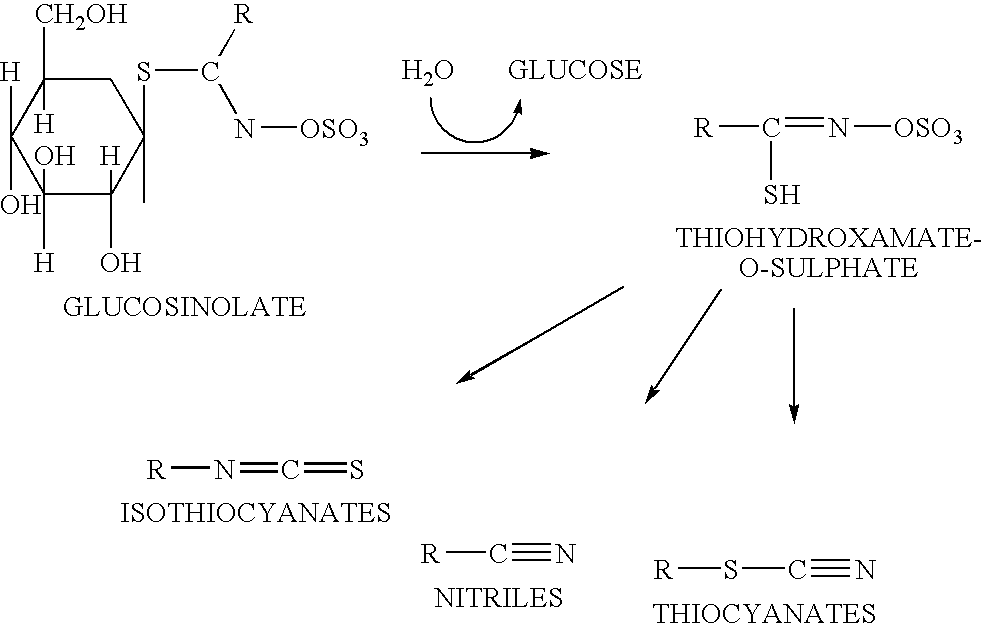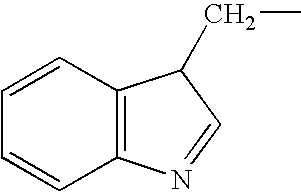Treatment of Plant Juices, Extracts and Pigments
- Summary
- Abstract
- Description
- Claims
- Application Information
AI Technical Summary
Benefits of technology
Problems solved by technology
Method used
Image
Examples
example 1
[0016]After the manufacturing procedure described above, the following processing steps are performed using a red cabbage pigment. The cation exchange and anion exchange resins are loaded in two separate columns. The resin is activated according to manufacturer's instructions using a series of caustic and acidic rinses. The deodorization is carried out by introducing the aqueous red cabbage pigment into the chromatographic column including a cation exchange resin bed and continuing to pass the pigment solution through the chromatographic column until the discharge from the column outlet is of similar color to the feed entering the column, whereupon the feed is stopped. Elution of the pigment is carried out by passing deionized water into the chromatographic column including a cation exchange resin and the bound pigment and continuing to pass the deionized water through the column until at least one bed volume has been passed and the eluate is minimally colored. Red cabbage pigment t...
example 2
[0019]Using the manufacturing procedure described above, the following processing steps are performed using a red cabbage pigment. The pH of the red cabbage pigment is increased to from about 4.0 to about 5.0 using a dilute food grade caustic solution. The pigment is dosed with Macer8™ and Depol™ 692L (cellulase and ferulic acid esterase from Trichoderma and Aspergillus sp. microorganisms). The enzyme is dosed at from about 1% to about 2% by weight and incubated for about 1 hour to about 2 hours at from about 55° C. to about 60° C. Pigment that has been incubated with enzyme is considered “enzyme treated.”
[0020]Enzyme treated red cabbage pigment is acidified by adjusting the pH using a 10% w / v sulfuric acid solution to from about 1 to about 3. The red cabbage pigment is then concentrated to the desired color unit value by vacuum distillation using a Rotavapor at 40 mm Hg, and from about 40° C. to about 50° C.
PUM
 Login to View More
Login to View More Abstract
Description
Claims
Application Information
 Login to View More
Login to View More - R&D
- Intellectual Property
- Life Sciences
- Materials
- Tech Scout
- Unparalleled Data Quality
- Higher Quality Content
- 60% Fewer Hallucinations
Browse by: Latest US Patents, China's latest patents, Technical Efficacy Thesaurus, Application Domain, Technology Topic, Popular Technical Reports.
© 2025 PatSnap. All rights reserved.Legal|Privacy policy|Modern Slavery Act Transparency Statement|Sitemap|About US| Contact US: help@patsnap.com



